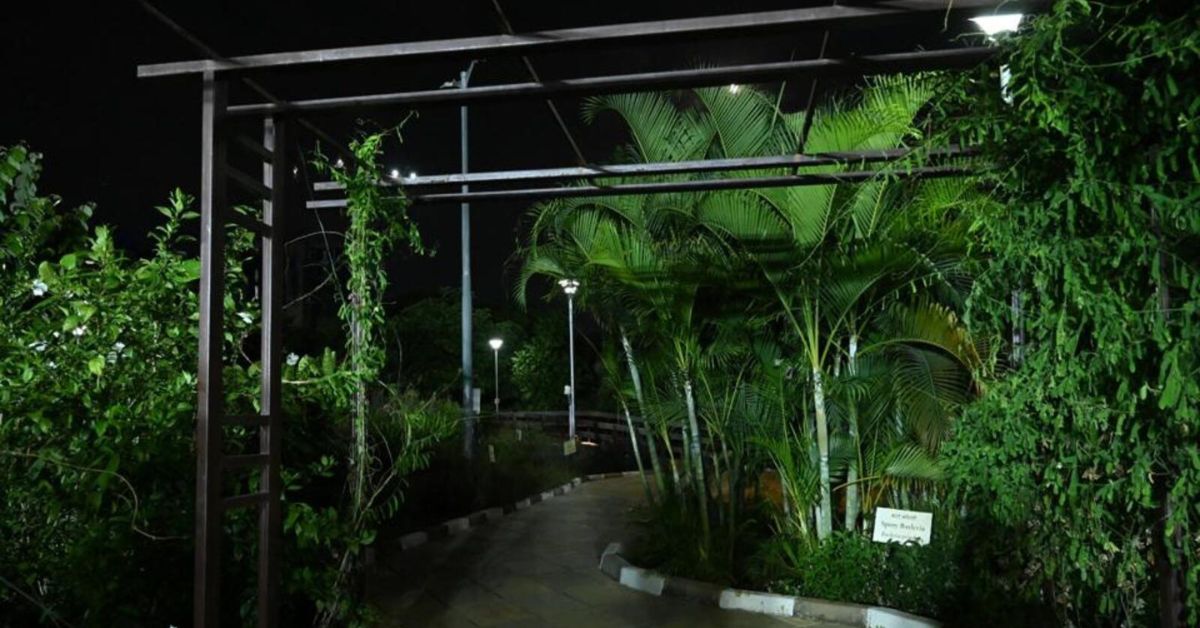Mumbai’s Marol Turned a Barren Plot into a 3.5-Acre Urban Forest That Cools the Area by 4°C
(Featured image courtesy Knocksense)
Picture this: right in the middle of Mumbai’s busy Marol — the industrial hub, a really interesting change is unfolding. What was once a barren, heat-radiating plot is now the Mahatapasvi Acharya Shri Mahashramanji Garden. Spread across three and a half lush green acres, this urban forest is doing more than just adding beauty — it’s cooling the local microclimate and changing the way we think about green spaces in cities.
Inaugurated on 11 May 2025, by Mumbai’s suburban guardian minister Ashish Shelar, the garden is a shining example of what’s possible when communities and institutions come together. The Brihanmumbai Municipal Corporation (BMC) and Marol Cooperative Industrial Estate joined hands with support from the District Planning and Development Committee. The ecological design was led by Studio Pipeelikaput, while the World Resources Institute (WRI) lent its scientific expertise to bring the vision to life.
The garden’s location is of significance. Marol, part of Andheri East, has long been identified as one of Mumbai’s most heat-stressed zones, exacerbated by industrial activity and sparse tree cover. The Mumbai Climate Action Plan highlighted the area’s rising land surface temperatures, prompting the need for immediate intervention.
A one-year journey of nurturing
The planting started back in March 2024 with the aim to bring back nature — the right way! Over 100 species from nearby green lungs like the Aarey Forest and Sanjay Gandhi National Park. Six types of bamboo and fruit-bearing trees like mango, jackfruit, papaya, and banana – all found a new home!
 This urban forest is booming with biodiversity, attracting birds and insects. Picture source: Hindustan Times.
This urban forest is booming with biodiversity, attracting birds and insects. Picture source: Hindustan Times.
Attracting birds and enhancing the ecosystem — these were two key objectives of this green vision. While the existing banyan and peepal trees were preserved, their new companions like deciduous trees, green grass, tiny shrubs and medicinal herbs were introduced.
So was the impact tangible?
Absolutely! Within a year, WRI’s assessments recorded a temperature drop of up to 4°C in densely vegetated areas when compared to the adjacent non-forested zones. That’s a big deal for Marol, which is known as one of Mumbai’s urban heat islands.
“This garden is a model of how collaborative efforts can transform urban spaces into climate-resilient zones,” Minister Shelar was quoted as saying by The Hindustan Times at the inaugural event. The success of this project underscores the potential of empowering concrete-dominated areas with greener spaces.
The Mahatapasvi Acharya Shri Mahashramanji Garden serves as an inspiring example for urban dwellers in India. With thoughtful planning, community involvement, and a commitment to sustainability, even the most unlikely spaces can be transformed into thriving green sanctuaries.
As cities battle the challenges of climate change, such initiatives offer a blueprint for creating healthier urban environments.
Edited by Saumya Singh
Sources
News